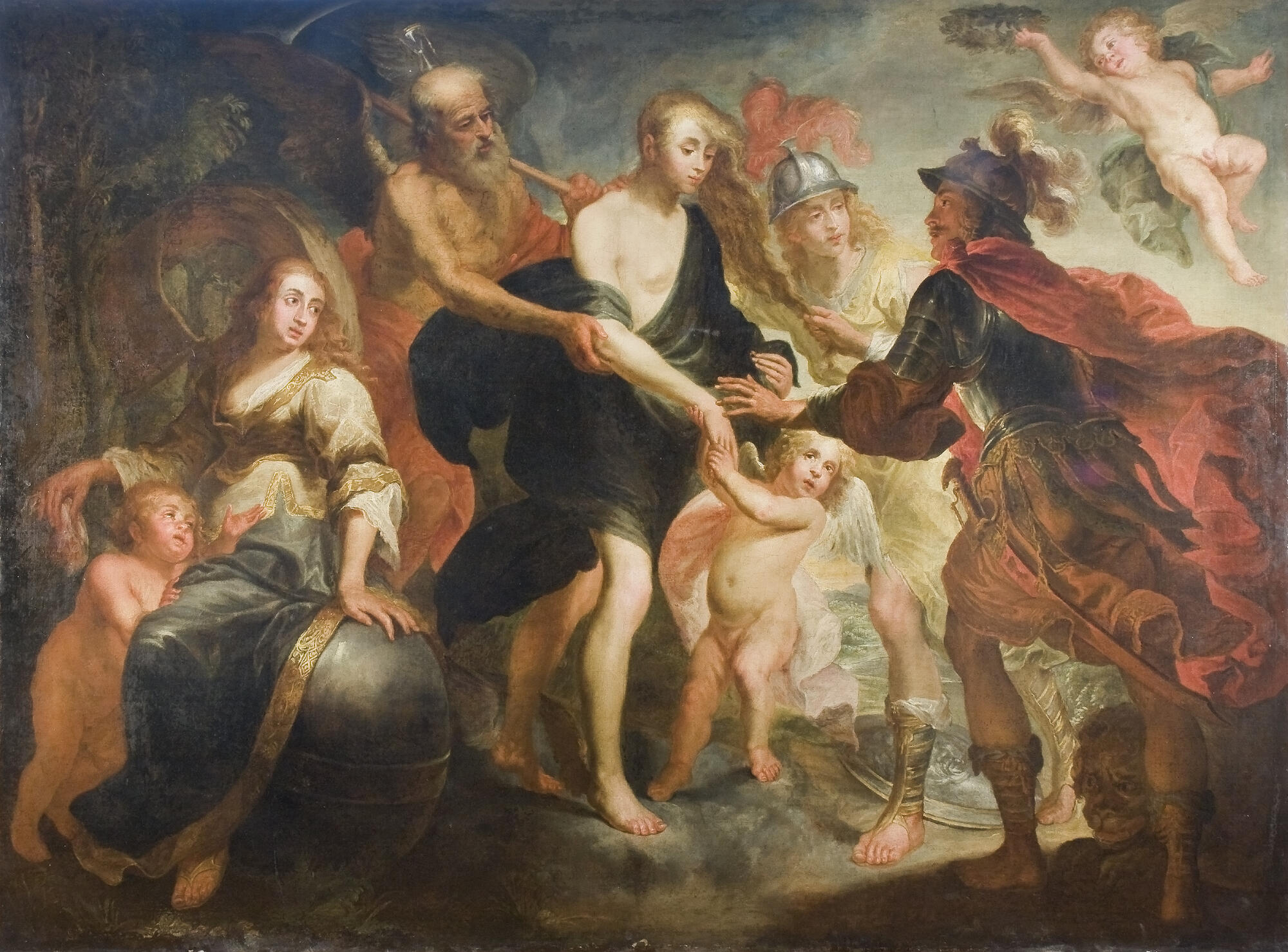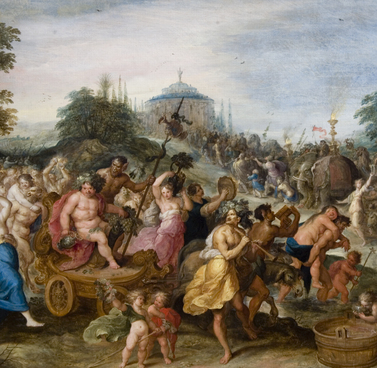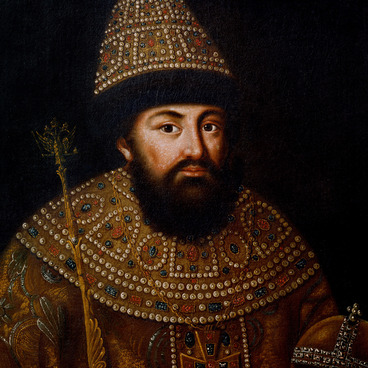The painting was created by an unknown Flemish artist who was in the circle of the prominent master of the 17th century, Sir Anthony van Dyck. Large-format canvases define a flourishing period of European Baroque Art with a full-merged literary plot, excessive tension and audience appeal of the depicted, an abundance of characters, and dynamic composition.
The spiritual allegory genre is one of the most common in Baroque painting. Such paintings were often commissioned by enlightened monarchs and noble aristocrats and served as embellishment for their palaces’ Grand interiors. Knowledge of characters and objects’ symbolic meaning helps in the understanding of an allegory (meaning, an allusion, an encrypted message). It was easier for the audience of that time as they were familiar with the symbolic language.
Among the characters of this canvas, the author brought out the main character, which is a half-naked girl, an allegory of Virtue and Truth, using lighting and placing upon the central axis. Old Cronus, Father Time, leads her out of the darkness and directs her to the warrior. Benevolent Athena looks at the warrior. The lion symbolizes military victory, tenacity, and willpower. It is at the young man’s feet witnessing his bravery, one of the virtues.
Thus, the artist encrypted the idea that Time is a great leveler: using the symbolic language bringing the sunlight of truth and rewards a hero for his virtues. The warrior will be rewarded not only by a Laurel wreath ordained for him but also with the love of a girl who is led to him by a small, winged Cupid, the god of love. Fortuna, the goddess of fortune and personification of luck depicted on the earth’s sphere on the left, is right there and grants him good luck. However, it seems that not everything is so bright on this canvas. It is a mystery why Fortuna is sad and keeps herself away from the hero. Perhaps, the reason is that she is fickle and capricious. The girl also looks sad. Sharp contrasts of light and shade bring anxiety and tension to the picture, inviting the audience to meditation and creative perception of the picture.
The spiritual allegory genre is one of the most common in Baroque painting. Such paintings were often commissioned by enlightened monarchs and noble aristocrats and served as embellishment for their palaces’ Grand interiors. Knowledge of characters and objects’ symbolic meaning helps in the understanding of an allegory (meaning, an allusion, an encrypted message). It was easier for the audience of that time as they were familiar with the symbolic language.
Among the characters of this canvas, the author brought out the main character, which is a half-naked girl, an allegory of Virtue and Truth, using lighting and placing upon the central axis. Old Cronus, Father Time, leads her out of the darkness and directs her to the warrior. Benevolent Athena looks at the warrior. The lion symbolizes military victory, tenacity, and willpower. It is at the young man’s feet witnessing his bravery, one of the virtues.
Thus, the artist encrypted the idea that Time is a great leveler: using the symbolic language bringing the sunlight of truth and rewards a hero for his virtues. The warrior will be rewarded not only by a Laurel wreath ordained for him but also with the love of a girl who is led to him by a small, winged Cupid, the god of love. Fortuna, the goddess of fortune and personification of luck depicted on the earth’s sphere on the left, is right there and grants him good luck. However, it seems that not everything is so bright on this canvas. It is a mystery why Fortuna is sad and keeps herself away from the hero. Perhaps, the reason is that she is fickle and capricious. The girl also looks sad. Sharp contrasts of light and shade bring anxiety and tension to the picture, inviting the audience to meditation and creative perception of the picture.



